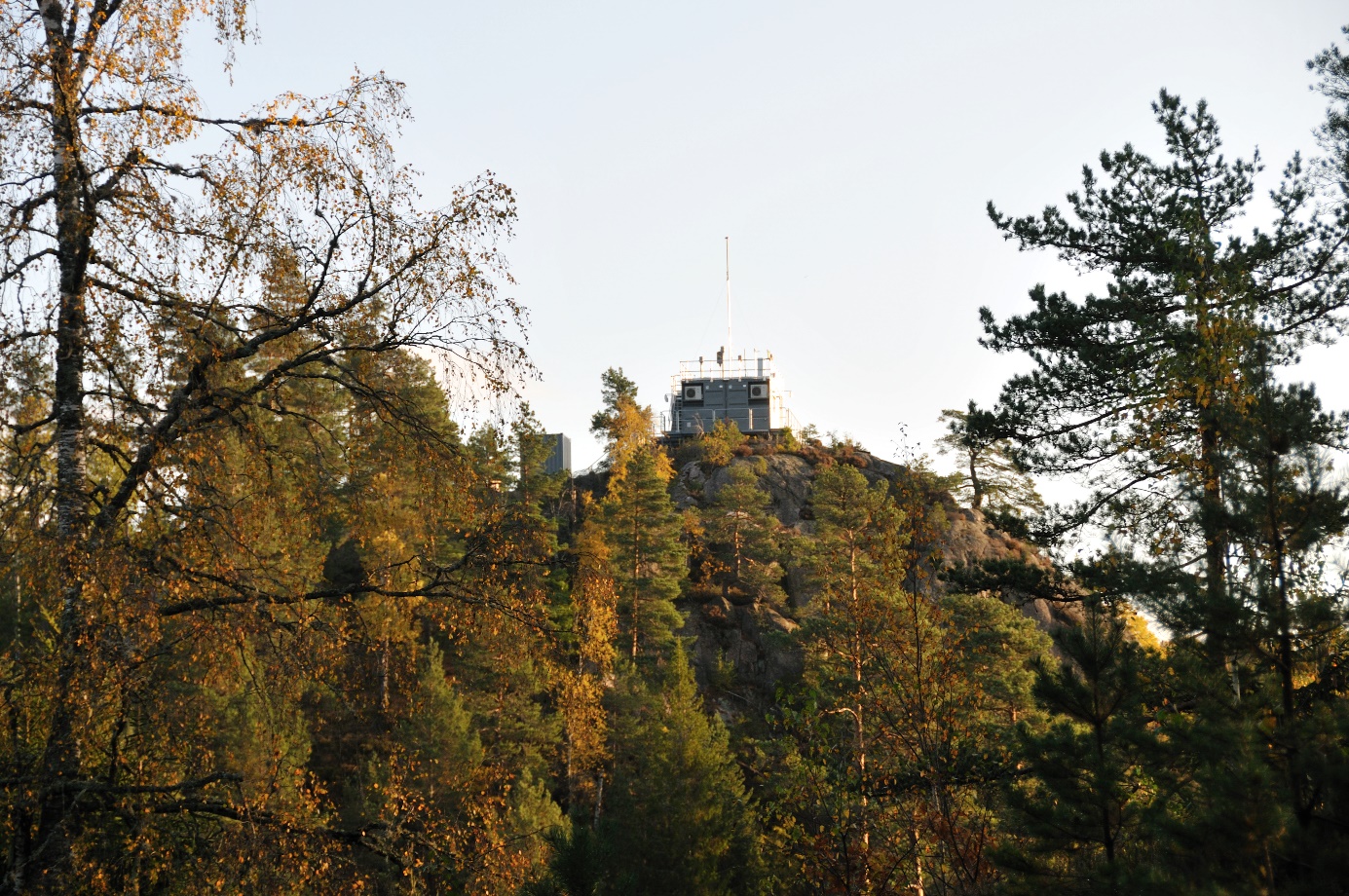
The Birkenes Observatory, operated by NILU, is located on a small hill (190 m a.s.l, 58° 23'N, 8° 15'E) and captures air masses representative of regional and larger scales. Land use near the site is characterized by forest (65%), meadow (10%), freshwater lakes (15%), and agricultural areas (10%, low intensity).
The observatory has been in operation since 1971. It was considerably upgraded in 2009 and the observations meet EMEP, ACTRIS and GAW standards, and include comprehensive suite of observations relevant for aerosol climate effect assessments, according to the GAW Scientific Advisory Group for Aerosols. Further developments are planned under the EMEP monitoring strategy and in the ACTRIS project, and upgrade to ICOS class 2 site under ICOS-Norway.
Since 2009, CO2 and CH4 are measured with a cavity ring-down spectroscopy instrument (Picarro™). In the ICOS-Norway project, Birkenes will be upgraded to a class 2 ICOS site. Changes will include the installation of a lidar system (or other system) for information on the planetary boundary layer height and a vertical profile of pollution above Birkenes. Furthermore, to improve the representativeness of the greenhouse gas measurements, the air inlet for the Picarro instrument will be placed on a tower and an automatic flask sampler will be installed.
All data from the Birkenes observatory are available from http://ebas.nilu.no, and a direct link to the data can be found here. The CH4 and CO2 measurements will also be made available through the Carbon Portal.
For further details see NILU's webpages about the Birkenes observatory.